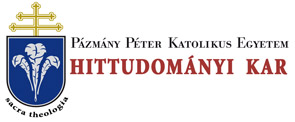Folia Theologica et Canonica 4. 26/18 (2015)
IUS CANONICUM - Szabolcs Anzelm Szuromi, O.Praem., The systematic development of the Liturgy of Hours during the first centuries - based on the Jewish and Christian tradition
THE SYSTEMATIC DEVELOPMENT OF THE LITURGY OF HOURS... 159 from St. Hilary’s conception.36 Nevertheless, we must underline, that Hilary’s work and commentary basically depends from Origen (t254)37 which is clearly recognizable by the used ideas and pictures. Origen commented the entire Bible and wrote so-called “scholia” to the single books of the Old Testament, including the Psalms.38 39 Naturally, we still do not have a well-supported concept about that Latin text of the Psalms which could be the basis for Hilary’s work, and we must notice that even this commentary of him was written in the anti- Arian period of the Church Fathers.34 The scientific debate concerning those Latin text-forms of the Psalms which were used during the Patristic Age was precisely explained and presented by László Vanyó in 2002, but even the research projects of the last more than one decade have not been able to define more accurately the possible texts.40 Another significant patristic author regarding the interpretation of Psalms, is St. Ambrose of Milan (t397).41 He has two composed works on Psalms, but he frequently used the Psalms as reference to his other writings. The Enarratio- nes in XII Psalmos davidicos we can read collected homilies about twelve Psalms which were given at the end of his life.42 The author is basically arguing on the messianic meaning of the analyzed sources with particular attention to explain the moral teaching of the Church. Maria Grazia Mara underlines that in the argumentation is clearly recognizable the influence of St. Basil the Great’s (f379) concept.43 The second combined work is the Expositio Psalmi CXVIII which contains twenty-two homilies about Psalm 118(119).44 This very Psalm is dedicated - as it is well known - exclusively to laudation of the law, which is the will of God. This basis inspired St. Ambrose to explain the importance of the law-abiding actions of faithful, and this law is the one which is given by the Creator and was clearly testified by Jesus Christ and his action. Therefore keeping the law means keeping the covenant, following Christ’s example.45 Based on the two presented significant patristic authors - St. Hilary and St. Ambrose - we can work up not only a general impression on the role and in36 di Berardino, A. - Quasten, J. (dir.), Patrologia, III. 59. 37 Cf. Trigg, J.W., Origen. The Bible and Philosophy in the Third-century Church, London 1983. 120-128. 38 Vanyó, L., Az ókeresztény egyház és irodalma, 403^404. 39 di Berardino, A. - Quasten, J. (dir.), Patrologia, III. 59-60. 40 Cf. Vanyó, L., Az egyházatyák bibliája és az ókeresztény exegézis módszere, története, Budapest 2002. 168-173. ' 41 di Berardino, A. - Quasten, J. (dir.), Patrologia, III. 166-211. Vanyó, L., Az ókeresztény egyház és irodalma, 758-768. 42 di Berardino, A. - Quasten, J. (dir.), Patrologia, III. 188. 43 di Berardino, A. - Quasten, J. (dir.). Patrologia, III. 188. 44 di Berardino, A. - Quasten, J. (dir.), Patrologia, III. 189. 45 di Berardino, A. - Quasten, J. (dir.), Patrologia, III. 189.
